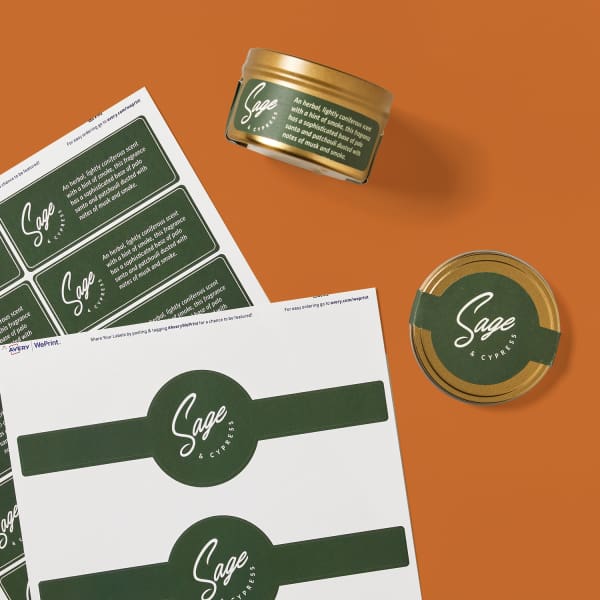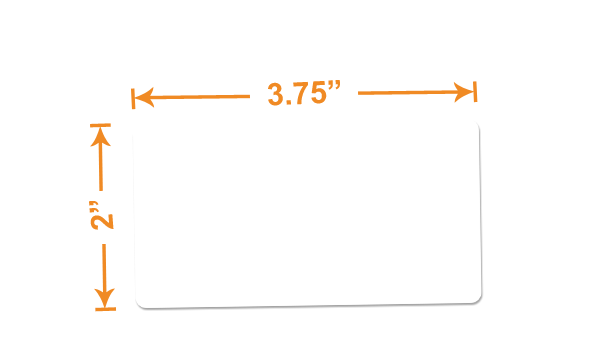Recognizing Exactly How Blank Labels Job to Enhance Your Labeling Experience
Understanding the mechanics of blank labels is vital for optimizing your labeling methods across numerous contexts. To completely realize how these labels can change your processes, one need to think about the various types available and the myriad means they can be customized to suit details requirements.

Advantages of Making Use Of Blank Labels
Blank labels provide a flexible service for numerous classifying needs, making them invaluable in both individual and professional setups. Their adaptability enables individuals to develop customized labels customized to details needs, improving organizational efficiency. Whether utilized in office, retail environments, or commercial applications, blank labels help with the identification and classification of items, records, and personal items.
One considerable advantage of blank labels is their cost-effectiveness. By permitting individuals to print only the labels they need, waste is minimized, and stock administration comes to be extra convenient. Additionally, blank labels are compatible with numerous printing methods, including inkjet and laser printers, making them available for various users.

Additionally, using blank labels streamlines the procedure of updating information, as customers can quickly print brand-new labels to replace out-of-date ones, making sure that all items and records are properly identified. In general, blank labels provide a practical and efficient labeling remedy for diverse applications.
Sorts Of Blank Labels Available
What choices are available when it comes to blank labels? Blank labels come in a range of types, each suited for different applications and preferences.
An additional popular option is synthetic labels, often made from materials like polyester or plastic. These labels are recognized for their durability and resistance to water, chemicals, and tearing, making them suitable for rough atmospheres. They are frequently made use of in commercial setups or for labeling products that might be revealed to wetness.
Furthermore, there are thermal transfer labels, which need a printer that uses warm to transfer ink onto the label surface. These labels are favored for their top quality print and durability.
Finally, specialty labels deal with particular needs, such as detachable labels for short-lived use or high-temperature labels for severe problems. Understanding these choices allows customers to choose one of the most appropriate blank tag for their special labeling demands.
Modification Options for Labels
A vast selection of customization alternatives is offered for labels, permitting individuals to customize them to particular demands and branding requirements. Individuals can pick from numerous dimensions, shapes, and products to guarantee that the labels effectively fit their designated function. Typical materials consist of paper, polyester, and plastic, each using various levels of longevity and visual appeal.
Color choices play a crucial duty in personalization, making it possible for brands to keep uniformity with their company identity. Users can pick from a range of shades and even go with custom-made printing look at this website to match specific branding aspects. Additionally, labels can be published with distinct layouts, logo designs, and message, improving brand acknowledgment and visual impact.
One more important facet is the selection of adhesive. Tags can be created with long-term, removable, or repositionable adhesives, depending on the application requirements. This adaptability allows for reliable directory labeling options across numerous atmospheres, from retail to industrial setups.

Tips for Effective Labeling
Reliable labeling surpasses customization; it likewise entails calculated factors to consider that boost performance and interaction. To accomplish efficient labeling, start by clearly defining the objective of each label. Take into consideration the info that needs to be communicated and guarantee it exists in an uncomplicated way. Using succinct language and staying clear of jargon can dramatically improve understanding.
Following, prioritize presence by choosing proper colors and typefaces. High comparison between message and history enhances readability, while larger fonts help with fast identification. In addition, make sure that labels are positioned in a regular and logical fashion, making it easier for customers to situate and analyze details.
Consider the durability of labels as well. Select products suited for the specific setting where the labels will certainly be used, whether it be indoors or outdoors. Waterproof or tear-resistant options may be needed depending upon the context.
Last but not least, consistently evaluation and upgrade your labels to reflect any kind of modifications in information or use. This proactive technique not only preserves clarity however also stays clear of confusion over time. By complying with these tips, you can make best use of the performance of your labeling efforts, ensuring they serve their designated function effectively.
Applications of Blank Labels
Blank labels offer countless applications throughout numerous markets, making them a very useful device for company and interaction. These flexible labels are generally utilized in storehouses for inventory monitoring, permitting companies to quickly recognize and track items. news By using blank labels to storage space bins, racks, or pallets, business can simplify their procedures and minimize the possibility of errors.
In the medical care field, blank labels play a crucial role in labeling medications and medical materials, making certain proper identification and usage. Personalized labels can include important details such as dose, expiry dates, and individual details, improving security and conformity.
In retail, blank labels assist in prices products, offering promotions, or classifying rack places, which eventually boosts the client experience. They permit quick updates to rates or item details without the requirement for pre-printed labels.
Moreover, blank labels are advantageous for individual usage, such as arranging office, crafting, or labeling food containers. Their adaptability permits people to create tailored remedies that satisfy details needs. Overall, the applications of blank labels are substantial, emphasizing their relevance in promoting performance and quality in numerous settings.
Conclusion
In conclusion, blank labels present a flexible and effective option for different identifying needs. Their flexibility in dimension, form, and material enables for customized applications across various atmospheres. By leveraging modification choices and effective labeling approaches, organizations can enhance clarity and communication (Blank Labels). Inevitably, the assimilation of blank labels into functional processes adds to improved efficiency, making them an indispensable source for both personal and specialist usage.